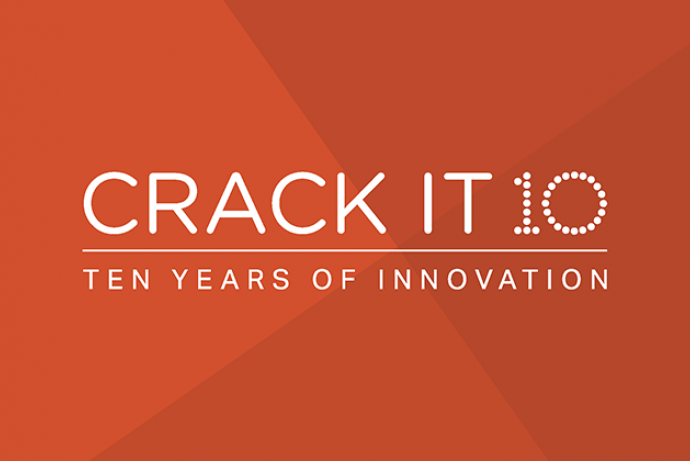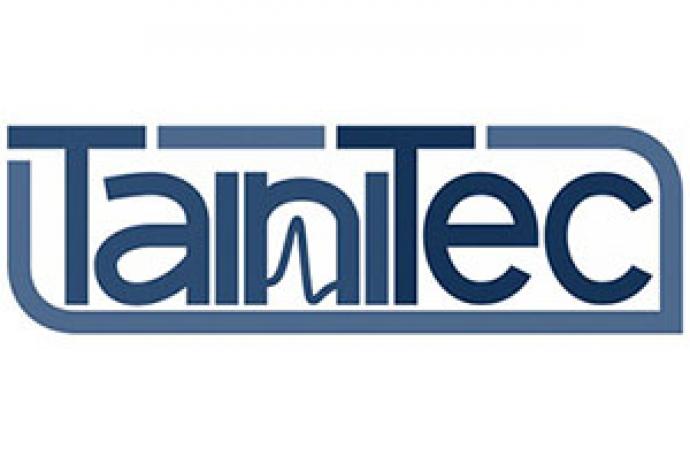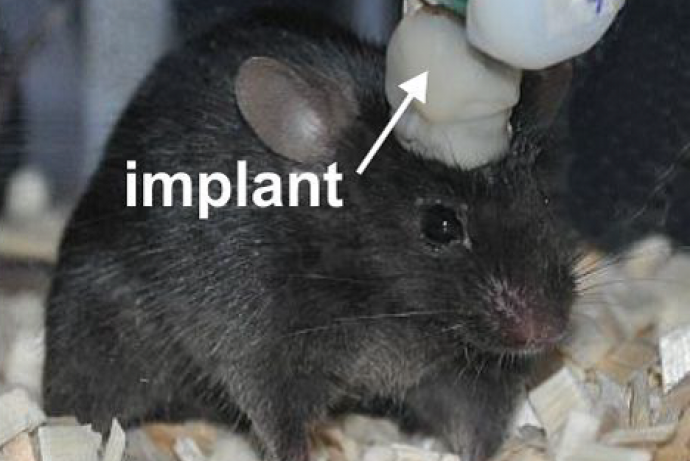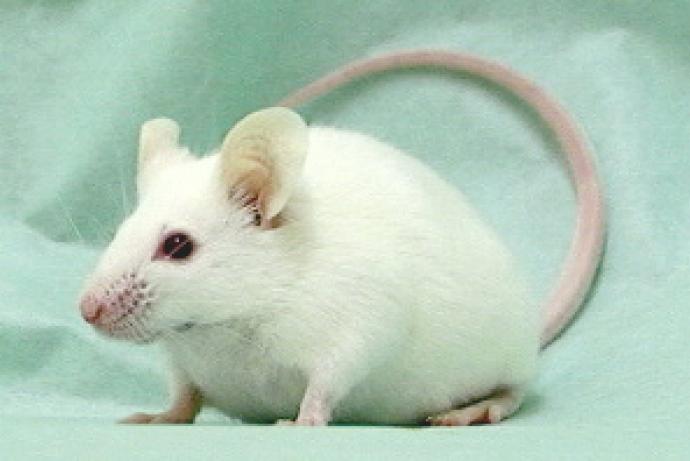Cognition
The aim of this Challenge was to develop a wireless neuronal recording system that could acquire and transmit data for a minimum of 24 hours and was small enough to be carried by a mouse without affecting its welfare.
To address this Challenge, the team led by Professor Esther Rodriguez-Villegas in collaboration with the Challenge Sponsors Eli Lilly have developed TaiNi, an ultra lightweight wireless device for recording neural activity from the brains of mice.
This project and its impacts are featured as a case study in the 2019 CRACK IT Review.
10 years of CRACK IT webinar: TaiNi by design – advancing the 3Rs in EEG recording in rodents

In February 2021 we held a webinar about TaiNi and how it is being adopted to refine neuroscience research, as part of our 10 years of CRACK IT celebrations. Speakers included Professor Esther Rodriguez-Villegas (Imperial College London), co-founder of TainiTec, and Dr Alfredo Gonzalez‑Sulser (University of Edinburgh), who has adopted the TaiNi device as part of his research. The recording of the webinar is now available online.
TaiNi wins international award
The Consortium for Innovation and Quality in Pharmaceutical Development (IQ) and the Association for Assessment and Accreditation of Laboratory Animal Care International (AAALAC) have announced the winners of their Global 3Rs Awards 2018.
Winner of the 2018 Global 3Rs Award for Europe is Professor Esther Rodriguez-Villegas, for the research paper produced through the Cognition CRACK IT Challenge ‘TaiNi: Maximizing research output whilst improving animals’ welfare in neurophysiology experiments’.
News item
Great coverage of the revolutionary TaiNi device in the i Paper.
Publication
Jiang Z, Huxter JR, Bowyer SA et al. (2017). TaiNi: Maximizing research output whilst improving animals’ welfare in neurophysiology experiments. Scientific reports 7(1): 8086. doi.org/10.1038/s41598-017-08078-8.
Product launched

TaiNi, is an ultra lightweight wireless device for recording neural activity from the brains of mice. The device weighs just 1.5g and records action potentials, field potentials and EEG signals from 16 channels continuously for up to 72 hours from mice performing a range of tasks in a variety of environments. The TaiNi system represents a significant refinement for mice used in neurological research.
Challenge complete

The team led by Professor Esther Rodriguez-Villegas, in collaboration with Challenge Sponsors Eli Lilly have developed an ultra lightweight wireless device for recording neural activity from the brains of mice.
Challenge awarded
A team led by Professor Esther Rodriquez-Villegas from Imperial College London has been awarded £500k to deliver the project: A miniature wireless EEG system for continuous monitoring of mice brainwave activity.
Challenge launched
Sponsored by Eli Lilly, the Cognition CRACK IT Challenge aims to develop a prototype of a neural wireless 16-32 channel recoding system that can acquire and transmit data for a minimum of 24 hours but ideally for more than ten days, that can be replaced or recharged with minimal discomfort for the animal and is small enough to be carried by a mouse without affecting its behaviour or welfare.
Background
Many brain disorders including schizophrenia and Alzheimer’s disease are characterised by severe impairments in cognition that are still both poorly understood and treated. There is mounting evidence that some deficits in cognitive function arise through a break down in the coordinated activity of neuronal networks responsible for memory, learning and decision-making. The hippocampus and medial prefrontal cortex are two regions of the brain thought to be central to cognitive processes. The coordinated activity of hippocampal-prefrontal networks is specifically engaged in mice learning to navigate a maze to find food; a paradigm that measures hippocampus-dependent spatial working memory. It is possible to record both the individual activity of the hippocampal neurons involved as well as the rhythmic activity that arises within networks of neurons using multi-site in vivo electrophysiology. By implanting electrodes in multiple brain regions and then recording brain activity while mice run on a T-maze, the rhythms and oscillations that are essential for synchronisation can be identified. Such recordings, in conjunction with behavioural outcome (e.g. how long it takes to find the food, the acquisition of the task and the error rate), will provide for greater validity of the cognitive tasks and disease models employed in drug discovery and consequently, much greater certainty of clinical impact.
An automated, computer controlled, modular maze has recently been developed. In this apparatus, mice perform multiple trials with reduced variability and at a much greater rate. The scientific and welfare advantages of this apparatus can only be fully realised if the animals are freely moving. Therefore there is a need to monitor neuronal activity in the hippocampal-prefrontal networks without requiring the animals to be tethered in any way. Some progress in this respect has been made with the introduction of a wireless multi-channel system for mice and rats by Triangle BioSystems. However the performance characteristics of this system (weight, size and battery life) are not adequate to exploit fully the advantages of the automated T-maze. Furthermore, software needs to be developed linking electrophysiology with behaviour, not only for this challenge, but ideally in a manner that is readily adapted to the wider use of wireless electrophysiology in other behavioural paradigms e.g. those using operant lever pressing or touchscreen techniques.
3Rs benefits
Traditional T-maze rewarded alternation tasks require intense handling which may alter the affective state of the mouse and so alter cognitive performance. This has been confirmed in a recent study which showed that handling history modified stress levels and subsequent behavioural responses. In the automated maze both handling and tethering are avoided. The mouse is able to enter the maze at will at pre-programmed times during the light/dark cycle without any human intervention. This allows the mice to perform when they are naturally more active (i.e. in the dark period). Furthermore, the mouse remains in visual, auditory and olfactory contact with cage mates during the inter-trial interval, giving additional welfare benefits. Automation greatly increases the number of trials an animal can complete in a 24 hour period allowing greater statistical power from fewer animals. For long term recording, lighter and smaller devices with greatly increased battery life will minimise stressful handling. Finally, the potential reduction and refinement benefits of such a device could also be realised in other behavioural experiments if the software is sufficiently adaptable.
Challenge winner
Project team led by:
Full Challenge information
EEG recordings are typically conducted in mice to understand neural activity and how it relates to specific behaviours or cognitive tasks, which is relevant for understanding brain disorders such as Alzheimer’s disease. Traditional tethered EEG devices significantly restrict the animal’s movement and limit the environments mice can be tested in. While existing wireless EEG devices allow greater freedom of movement, they are still relatively heavy for mice to carry (>4g) and have limited battery life. In addition, handling the animals to untwist tethers or change batteries can be stressful to the animal and affect behaviour.
To overcome the animal welfare and technical limitations associated with existing EEG recording systems, the team of engineers at Imperial College London, led by Professor Esther Rodriguez-Villegas, in collaboration with Challenge Sponsors Lilly, developed TaiNi, an ultra lightweight wireless device for recording neural activity from the brains of mice (Figure 1). The device weighs just 1.5g, and records action potentials, field potentials and EEG signals from 16 channels continuously for up to 72 hours from mice performing a range of tasks in a variety of environments.
Figure 1. Dimensions of the TaiNi device.
The TaiNi device offers significant animal welfare and scientific benefits compared to other wireless and tethered devices on the market (Video 1 and 2 and Table 1). Mice wearing the TaiNi device can freely move around their cage and maintain the normal repertoire of movements and behaviours (Video 2).
When compared to a similar state-of-the-art wireless device on the market, TaiNi offers significant improvements in terms of weight, battery life and behaviour (Table 1). The ultra lightweight TaiNi device resulted in significant improvements in the ability to complete trials in an automated T-maze task for spatial working memory compared to the heavier state-of-the-art device (Jiang et al., 2017). The ability to complete more trials increases statistical power and reduces the number of animals required for a given experiment. Importantly, recordings using the TaiNi device can now be taken in automated testing arenas linked to the animal’s home cage, where mice have a choice of when they perform behavioural tasks, with the advantage of avoiding repeated handling that can be stressful.
The research has been published in Nature Scientific Reports and the team at Imperial has formed a spin out company called TainiTec to commercialise the technology. Further information about the TaiNi device can be found here.
Video 1. Video of a mouse wearing a tethering EEG device.
Video 2. Video of the same mouse wearing the TaiNi device.
Table 1. Comparison of the TaiNi device with other commercially available recording devices and Lilly specifications.
| Weight (g) | Time (hours) | Channels | Bandwidth (Hz) | bit-depth | Noise (rms) | |
| Lilly system specifications | ||||||
| Ideal | 3 | 240 | 16 | 10000 | 12 | ~1μV |
| Absolute limit | 3 | 16 | 16 | 7500 | 10 | 8μV |
| Commercially available telemetry systems | ||||||
| TaiNi | 1.5 | 72 | 16 | 0.3-9400 | 12 | 3.9μV |
| Millar MT10Ba | 2.5 | N/A | 2 | 2-440 | 12 | N/A |
| TBSI W16 | 4.0 | 4.2 | 16 | 0.8-7000 | 16 | 8.3μV |
| EMKA rodentPACK | 5.2 | 150 | 4 | 1-150 | 12 | NA |
| Multichannel systems W2100-HS16 | 6.8 | 1.7 | 16 | 1-5000 | 16 | 1.9μV |
| Neuralynx CUBE-64 | 17.0 | 0.5 | 64 | 0.1-8000 | 16 | 2.5μV |
| Pinnacle 8200-K6-SLb | 23.0 | 36 | 3 | ? (<1000) | 12 | N/A |
| Dueteron Technologies MouseLog-16c | 2.8 | 9 | 16 | 1-7000 | N/A | N/A |
| TSE systems Neurologgerb,c | 2.5 | 92 | 4 | ? (<250) | N/A | N/A |
a inductive charging system (no maximum recording time)
b band-width was not specified in available materials, and is inferred
c data-logger systems (no transmission)
TaiNi images, videos and table are reproduced from the article referenced below, under a Creative Commons Attribution 4.0 International License (https://creativecommons.org/licenses/by/4.0/).
Jiang Z, Huxter JR, Bowyer SA et al. (2017). TaiNi: Maximizing research output whilst improving animals’ welfare in neurophysiology experiments. Scientific Reports 7(1): 8086. doi:10.1038/s41598-017-08078-8.
Lightweight, wireless device for neural recording in mice
TainiTec’s range of wireless neural recording systems are created using highly innovative low-power design techniques to make them exceptionally small and lightweight. This means that they can monitor and transmit neural data for long periods of time, with minimal behavioural interference. This improves both the scientific validity and quantity of data generated from electrophysiology experiments performed using the systems and provides significant welfare benefits to the mice used.
Applications
TAINI transmitters are being used in a range of electrophysiology experiments, ranging from Electrocorticography (ECoG) and Local Field Potential (LFP) to Multi-unit recordings. From this data, researchers and scientists are analysing signals to extract action potentials, evoked potentials and event related potentials. Current experimental setups include integration with external video, audio and many forms of stimuli. The transmitters have been successfully used in conventional home cages, multi-animal home cages, complex experimental arenas and large scale mazes.
TAINI systems are now being used to study high-quality and previously un-recordable electrophysiology signals in pharmaceutical companies and university research laboratories across the UK and Europe.
TainiTec currently offer a variety of different systems for sale, each targeted to different experimental animals and set ups (see a full table of systems and products in the table on the TainiTec website). System requirements outside of these products can be discussed.
Features






Access the technology
Find out more about this product on the TainiTec website.



